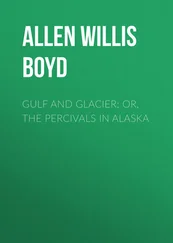Willis Abbot - Aircraft and Submarines
Здесь есть возможность читать онлайн «Willis Abbot - Aircraft and Submarines» — ознакомительный отрывок электронной книги совершенно бесплатно, а после прочтения отрывка купить полную версию. В некоторых случаях можно слушать аудио, скачать через торрент в формате fb2 и присутствует краткое содержание. Жанр: foreign_antique, foreign_prose, на английском языке. Описание произведения, (предисловие) а так же отзывы посетителей доступны на портале библиотеки ЛибКат.
- Название:Aircraft and Submarines
- Автор:
- Жанр:
- Год:неизвестен
- ISBN:нет данных
- Рейтинг книги:4 / 5. Голосов: 1
-
Избранное:Добавить в избранное
- Отзывы:
-
Ваша оценка:
- 80
- 1
- 2
- 3
- 4
- 5
Aircraft and Submarines: краткое содержание, описание и аннотация
Предлагаем к чтению аннотацию, описание, краткое содержание или предисловие (зависит от того, что написал сам автор книги «Aircraft and Submarines»). Если вы не нашли необходимую информацию о книге — напишите в комментариях, мы постараемся отыскать её.
Aircraft and Submarines — читать онлайн ознакомительный отрывок
Ниже представлен текст книги, разбитый по страницам. Система сохранения места последней прочитанной страницы, позволяет с удобством читать онлайн бесплатно книгу «Aircraft and Submarines», без необходимости каждый раз заново искать на чём Вы остановились. Поставьте закладку, и сможете в любой момент перейти на страницу, на которой закончили чтение.
Интервал:
Закладка:
The Montgolfier brothers, Joseph and Jacques, were paper-makers of Paris. The family had long been famous for its development of the paper trade, and the many ingenious uses to which they put its staple. Just as the tanners of the fabled town in the Middle Ages thought there was "nothing like leather" with which to build its walls and gates, thereby giving a useful phrase to literature, so the Montgolfiers thought of everything in terms of paper. Sitting by their big open fireplace one night, so runs the story, they noticed the smoke rushing up the chimney. "Why not fill a big paper bag with smoke and make it lift objects into the air?" cried one. The experiment was tried next day with a small bag and proved a complete success. A neighbouring housewife looked in, and saw the bag bumping about the ceiling, but rapidly losing its buoyancy as the smoke escaped.
"Why not fasten a pan below the mouth of the bag," said she, "and put your fire in that? Its weight will keep the bag upright, and when it rises will carry the smoke and the pan up with it."
Acting upon the hint the brothers fixed up a small bag which sailed up into the air beyond recapture. After various experiments a bag of mixed paper and linen thirty-five feet in diameter was inflated and released. It soared to a height of six thousand feet, and drifted before the wind a mile or more before descending. The ascent took place at Avonay, the home at the time of the Montgolfiers, and as every sort of publicity was given in advance, a huge assemblage including many officials of high estate gathered to witness it. A roaring fire was built in a pit over the mouth of which eight men held the great sack, which rolled, and beat about before the wind as it filled and took the form of a huge ball. The crowd was unbelieving and cynical, inclined to scoff at the idea that mere smoke would carry so huge a construction up into the sky. But when the signal was given to cast off, the balloon rose with a swiftness and majesty that at first struck the crowd dumb, then moved it to cheers of amazement and admiration. It went up six thousand feet and the Montgolfiers were at once elevated to almost an equal height of fame. The crowd which watched the experiment was wild with enthusiasm; the Montgolfiers elated with the first considerable victory over the force of gravity. They had demonstrated a principle and made their names immortal. What remained was to develop that principle and apply it to practical ends. That development, however, proceeded for something more than a century before anything like a practical airship was constructed.
But for the moment the attack on the forces which had kept the air virgin territory to man was not allowed to lag. In Paris public subscriptions were opened to defray the cost of a new and greater balloon. By this time it was known that hydrogen gas, or "inflammable air" as it was then called, was lighter than air. But its manufacture was then expensive and public aid was needed for the new experiment which would call at the outset for a thousand pounds of iron filings and 498 pounds of sulphuric acid wherewith to manufacture the gas.
The first experiment had been made in the provinces. This one was set for Paris, and in an era when the French capital was intellectually more alert, more eager for novelty, more interested in the advancement of physical science and in new inventions than ever in its long history of hospitality to the new idea. They began to fill the bag August 23, 1783 in the Place des Victoires , but the populace so thronged that square that two days later it was moved half filled to Paris's most historic point, the Champ de Mars . The transfer was made at midnight through the narrow dark streets of mediæval Paris. Eyewitnesses have left descriptions of the scene. Torch-bearers lighted on its way the cortège the central feature of which was the great bag, half filled with gas, flabby, shapeless, monstrous, mysterious, borne along by men clutching at its formless bulk. The state had recognized the importance of the new device and cuirassiers in glittering breastplates on horseback, and halbardiers in buff leather on foot guarded it in its transit through the sleeping city. But Paris was not all asleep. An escort of the sensation-loving rabble kept pace with the guards. The cries of the quarters rose above the tramp of the armed men. Observers have recorded that the passing cab drivers were so affected by wonder that they clambered down from their boxes and with doffed hats knelt in the highway while the procession passed.
The ascension, which occurred two days later, was another moving spectacle. In the centre of the great square which has seen so many historic pageants, rose the swaying, quivering balloon, now filled to its full capacity of twenty-two thousand feet. Whether from the art instinct indigenous to the French, or some superstitious idea like that which impels the Chinese to paint eyes on their junks, the balloon was lavishly decorated in water colours, with views of rising suns, whirling planets, and other solar bodies amongst which it was expected to mingle.
Ranks of soldiers kept the populace at a distance, while within the sacred precincts strolled the King and the ladies and cavaliers of his court treading all unconsciously on the brink of that red terror soon to engulf the monarchy. The gas in the reeling bag was no more inflammable than the air of Paris in those days just before the Revolution. With a salvo of cannon the guy-ropes were released and the balloon vanished in the clouds.
Benjamin Franklin, at the moment representing in France the American colonies then struggling for liberty, witnessed this ascension! "Of what use is a new-born child?" he remarked sententiously as the balloon vanished. 'Twas a saying worthy of a cautious philosopher. Had Franklin been in Paris in 1914 he would have found the child, grown to lusty manhood, a strong factor in the city's defence. It is worth noting by the way that so alert was the American mind at that period that when the news of the Montgolfiers' achievement reached Philadelphia it found David Rittenhouse and other members of the Philosophical Society already experimenting with balloons.
A curious sequel attended the descent of the Montgolfier craft which took place in a field fifteen miles from Paris. Long before the days of newspapers, the peasants had never heard of balloons, and this mysterious object, dropping from high heaven into their peaceful carrot patch affrighted them. Some fled. Others approached timidly, armed with the normal bucolic weapons – scythes and pitchforks. Attacked with these the fainting monster, which many took for a dragon, responded with loud hisses and emitted a gas of unfamiliar but most pestiferous odour. It suggested brimstone, which to the devout in turn implied the presence of Satan. With guns, flails, and all obtainable weapons they fell upon the emissary of the Evil One, beat him to the ground, crushed out of him the vile-smelling breath of his nostrils, and finally hitched horses to him and dragged him about the fields until torn to tatters and shreds.
When the public-spirited M. Charles who had contributed largely to the cost of this experiment came in a day or two to seek his balloon he found nothing but some shreds of cloth, and some lively legends of the prowess of the peasants in demolishing the devil's own dragon.
The government, far-sightedly, recognizing that there would be more balloons and useful ones, thereupon issued this proclamation for the discouragement of such bucolic valour:
A discovery has been made which the government deems it wise to make known so that alarm may not be occasioned to the people. On calculating the different weights of inflammable and common air it has been found that a balloon filled with inflammable air will rise toward heaven until it is in equilibrium with the surrounding air; which may not happen till it has attained to a great height. Anyone who should see such a globe, resembling the moon in an eclipse, should be aware that far from being an alarming phenomenon it is only a machine made of taffetas, or light canvas covered with paper, that cannot possibly cause any harm and which will some day prove serviceable to the wants of society.
Читать дальшеИнтервал:
Закладка:
Похожие книги на «Aircraft and Submarines»
Представляем Вашему вниманию похожие книги на «Aircraft and Submarines» списком для выбора. Мы отобрали схожую по названию и смыслу литературу в надежде предоставить читателям больше вариантов отыскать новые, интересные, ещё непрочитанные произведения.
Обсуждение, отзывы о книге «Aircraft and Submarines» и просто собственные мнения читателей. Оставьте ваши комментарии, напишите, что Вы думаете о произведении, его смысле или главных героях. Укажите что конкретно понравилось, а что нет, и почему Вы так считаете.












